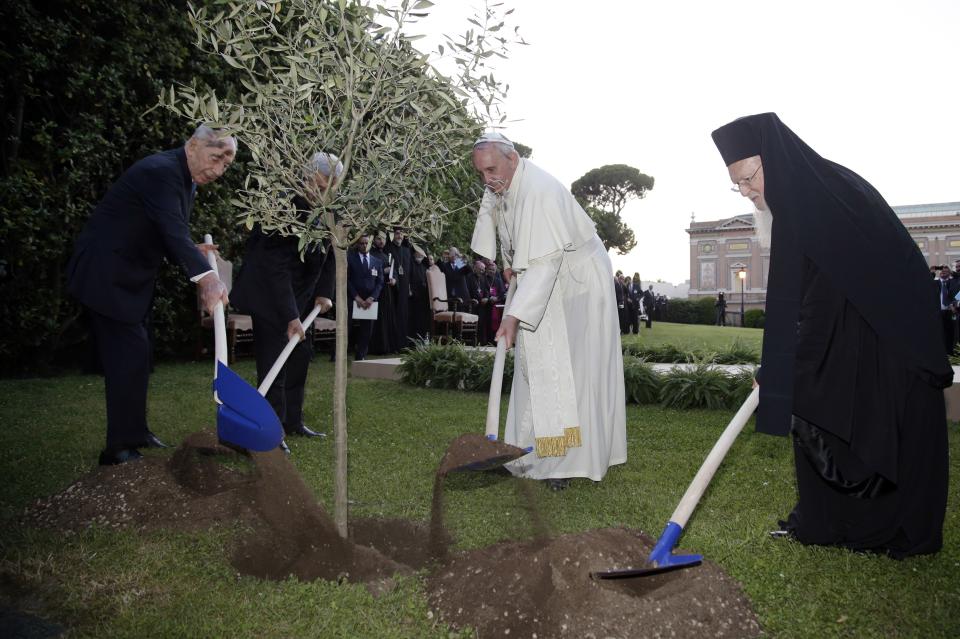http://www.thecirclesofmarycare.com/flos-carmeli.html http://yorkshireshepherd.blogspot.in/2011/07/our-lady-of-mt-carmel.html
The Carmelites actually trace their origins back to pre-Christianity, to a community of contemplative hermits who settled on Mount Carmel in honor of the great prophets Elijah and his successor, Elisha.http://www.marian-devotions.com/page_38_Our_Lady_Mount_Carmel_July_16.html
The hermits' knowledge of Scripture and prophecy inspired them to recognize the Infant Jesus as the Messiah when the Holy Family returned to the village at the base of Mount Carmel—the village of Nazareth—after their two years of exile in Egypt.
Tradition holds that these "Carmelites" were among the first to be baptized by the Apostles into the new Church after Pentecost and that they were the first to take guardianship of the Holy Family's house .in Nazareth, following the death of the Virgin Mary and her Assumption into heaven. The hermits built a chapel in her honor there.
The Carmelites did not formally organize themselves as a religious order until the 13th century. At that time they appealed to the Patriarch of Jerusalem to formulate a "rule" for them—a document describing their devotional practices and setting out some rules for the organization and governing of the Order.
The Saracen persecutions during the Third Crusade caused the Carmelites (and a great many other Christians, including the Knights Templar and the Hospitallers) to migrate westward. The Carmelites first reached England in the year 1212. A year later, they were joined by a holy Englishman, Simon Stock.
July 16 was chosen as the Carmelite patronal feast day because on that day in 1251, tradition says, the Blessed Virgin appeared to Simon Stock, then General of the Carmelites, at Cambridge, England, Our Lady showed him the scapular and promised spiritual favors and her special protection to his Order and to all persons who would wear her scapular.
http://www.saintsgalore.com/images/catalog/HC-014.jpg
Flos Carmeli Prayer
Flos Carmeli
13th-century hymn to Our Lady attributed to the Carmelite St. Simon Stock
Flos Carmeli (Flower of Carmel)
Flower of Carmel, tall vine, blossom-laden;
splendour of heaven, child-bearing, yet maiden;
none equals thee.
Mother so tender, whom no man didst know,
on Carmel's children thy favours bestow;
Star of the Sea!
Strong stem of Jesse, who bore one bright flower,
be ever near us, and guard us each hour,
who serve thee here.
Purest of lilies, that flowers among thorns,
bring help to true hearts that in weakness turn
and trust in thee.
Strongest of armour, we trust in thy might,
under thy mantle, hard pressed in the fight,
we call to thee.
Our way, uncertain, surrounded by foes,
unfailing counsel you offer to those
who turn to thee.
O gentle Mother, who in Carmel reigns,
share with your servants that gladness you gained,
and now enjoy.
Hail, gate of heaven, with glory now crowned,
bring us to safety, where thy Son is found,
true joy to see.
V. Holy Mary, Mother of Christ, hear the cry of your servants.
R. And bring down heavenly aid in answer to our prayer.
Let us pray:
By a special privilege, Lord, you have adorned the Carmelite Order with the name of your Mother, the most glorious Virgin Mary. Grant as we faithfully remember this honour, that in these days we may receive her protection and in the days to come we may be brought to everlasting happiness. This we ask of you who are living and reigning for ever. Amen.






